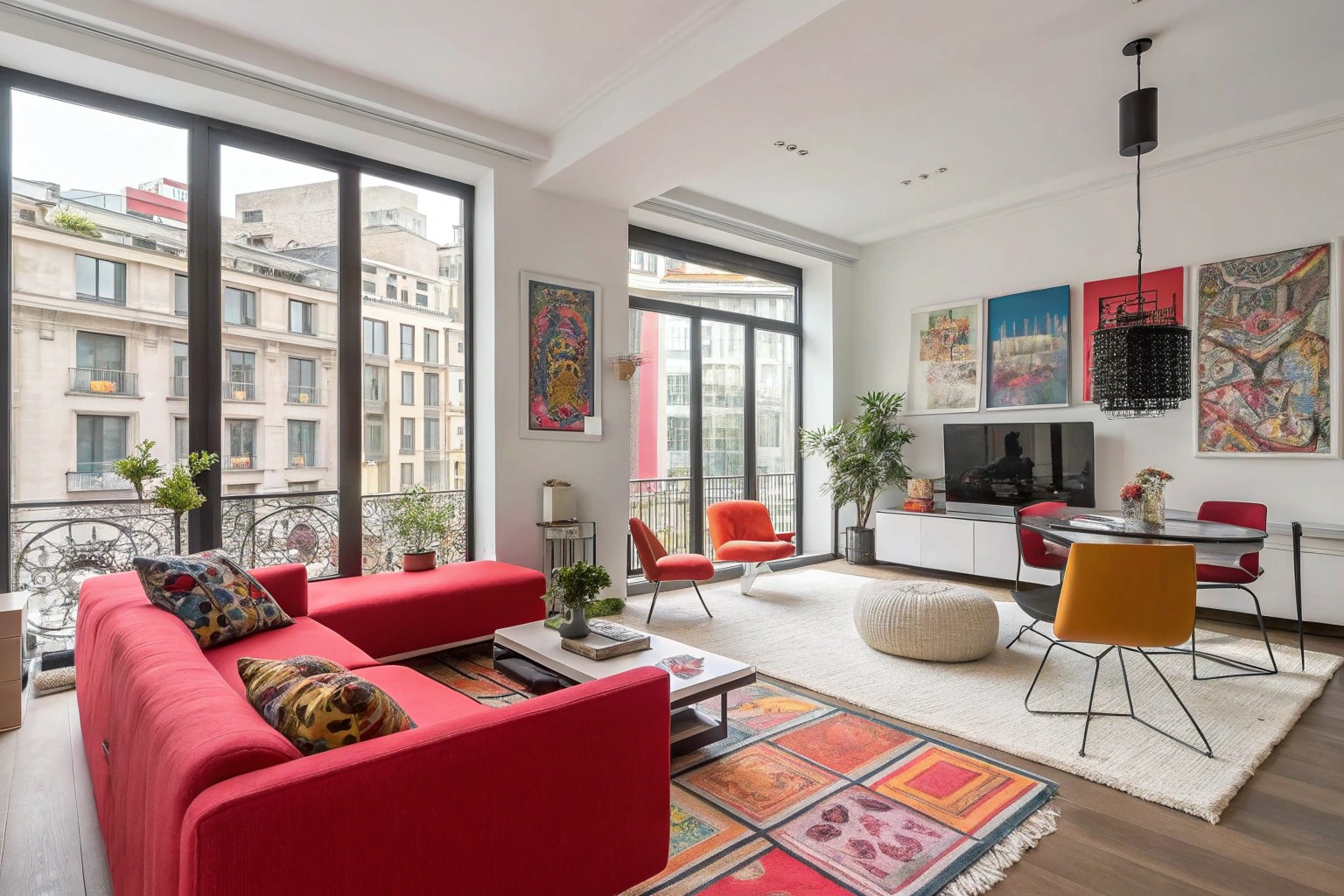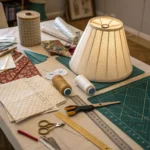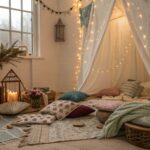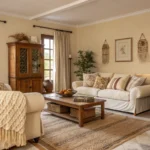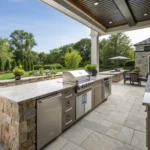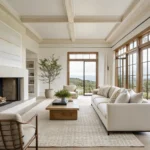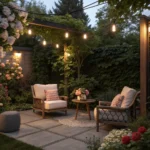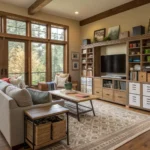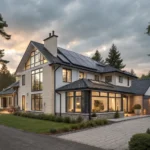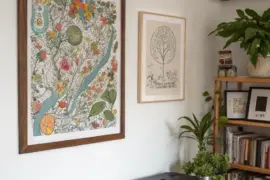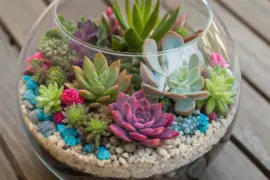The art of pairing seemingly incompatible objects has emerged as one of the most compelling approaches to creating memorable, personalized spaces. When executed thoughtfully, these unexpected duos can transform ordinary rooms into conversation-worthy environments that reflect both sophistication and creative confidence.
The Psychology Behind Successful Object Pairings
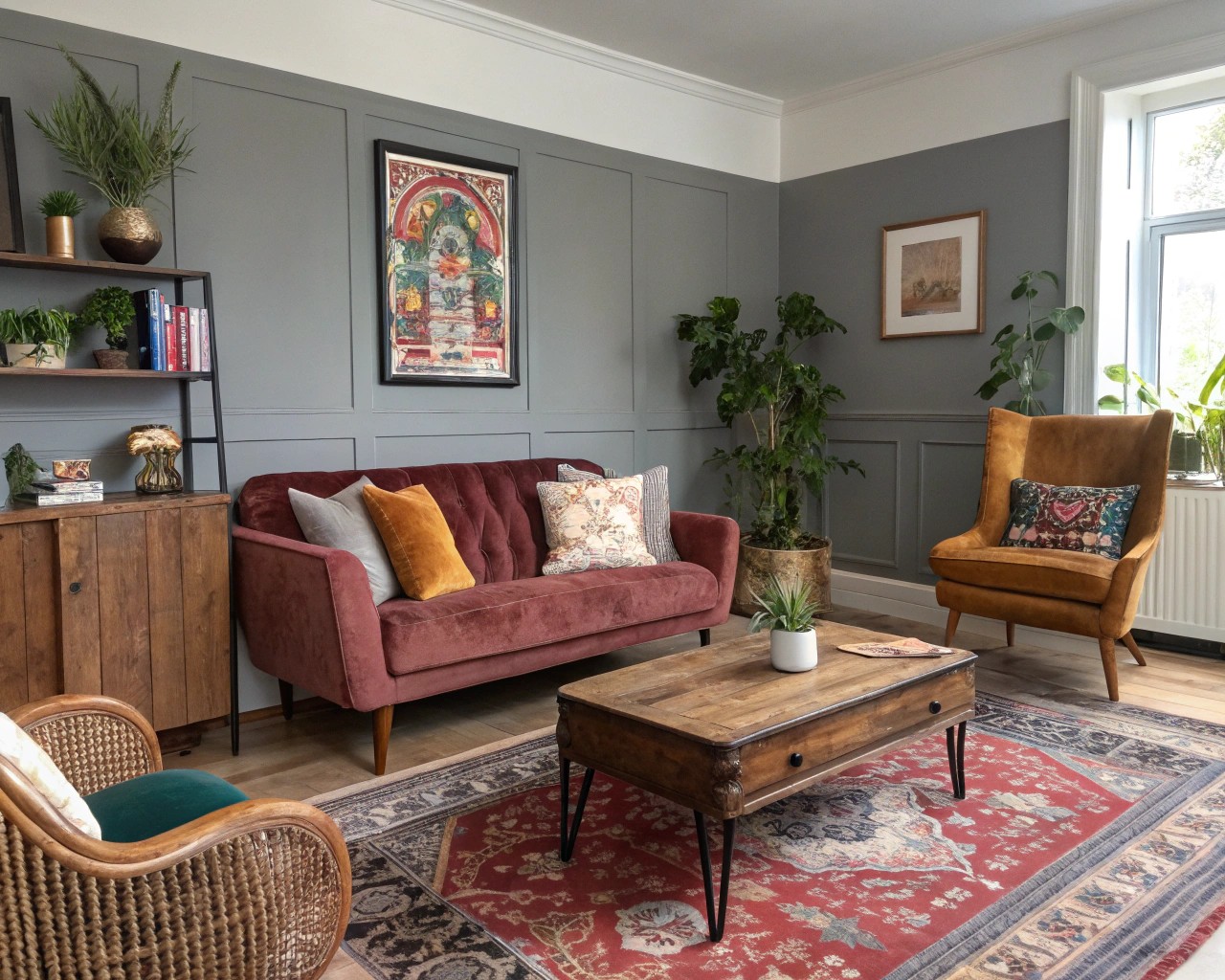
Understanding why certain combinations captivate the eye while others fall flat begins with recognizing how our brains process visual information. The Gestalt principles of design reveal that we naturally seek patterns and relationships between objects, making successful pairings feel both surprising and inevitable. When you place contrasting elements together—a rough-hewn wooden bowl beside a sleek marble sculpture, for instance—the brain experiences a delightful tension that creates visual interest without chaos.
The current “Daring Pairings” trend exemplifies this psychological principle perfectly. This 2025 design movement celebrates “unexpected combinations that shouldn’t work (yet somehow do)” by embracing contrasts in color, texture, and style. Rather than following traditional matching rules, this approach invites you to trust your instincts and experiment with pieces that speak to you individually, regardless of their apparent compatibility.
Key Psychological Triggers for Successful Pairings:
- Contrast tension: Creates visual excitement through opposing elements
- Material dialogue: Different textures “conversation” with each other
- Scale relationships: Varying sizes that maintain proportional harmony
- Color temperature balance: Warm and cool tones that complement rather than compete
Material Contrasts That Create Magic

The most compelling object duos often emerge from thoughtful material juxtapositions. I’ve found that pairing hard with soft, smooth with textured, and industrial with organic consistently produces striking results. The key lies in ensuring that each material maintains its distinct character while contributing to a cohesive whole.
Concrete and Timber Combinations
This pairing represents perhaps the most foolproof formula for adding depth and tactility to any space. The cool, industrial nature of concrete finds perfect balance with timber’s organic warmth. Consider these specific applications:
- Kitchen islands: Poured concrete surfaces surrounded by oak cabinetry
- Bathroom vanities: Concrete vessel sinks on reclaimed wood bases
- Living room accents: Floating timber shelves against concrete feature walls
- Outdoor spaces: Concrete planters paired with weathered teak furniture
Metal and Natural Fiber Pairings
The interplay between sleek metals and organic textiles creates sophisticated tension. Brass accessories gain warmth when paired with linen upholstery, while steel elements feel more approachable alongside jute or wool textures. This combination works particularly well in transitional spaces where you want to bridge formal and casual elements.
Glass and Stone Partnerships
Transparent or translucent glass elements allow stone’s natural beauty to shine while adding lightness to potentially heavy compositions. Think crystal vases on granite surfaces, or glass pendant lights over travertine dining tables.
Unexpected Color Duos That Captivate
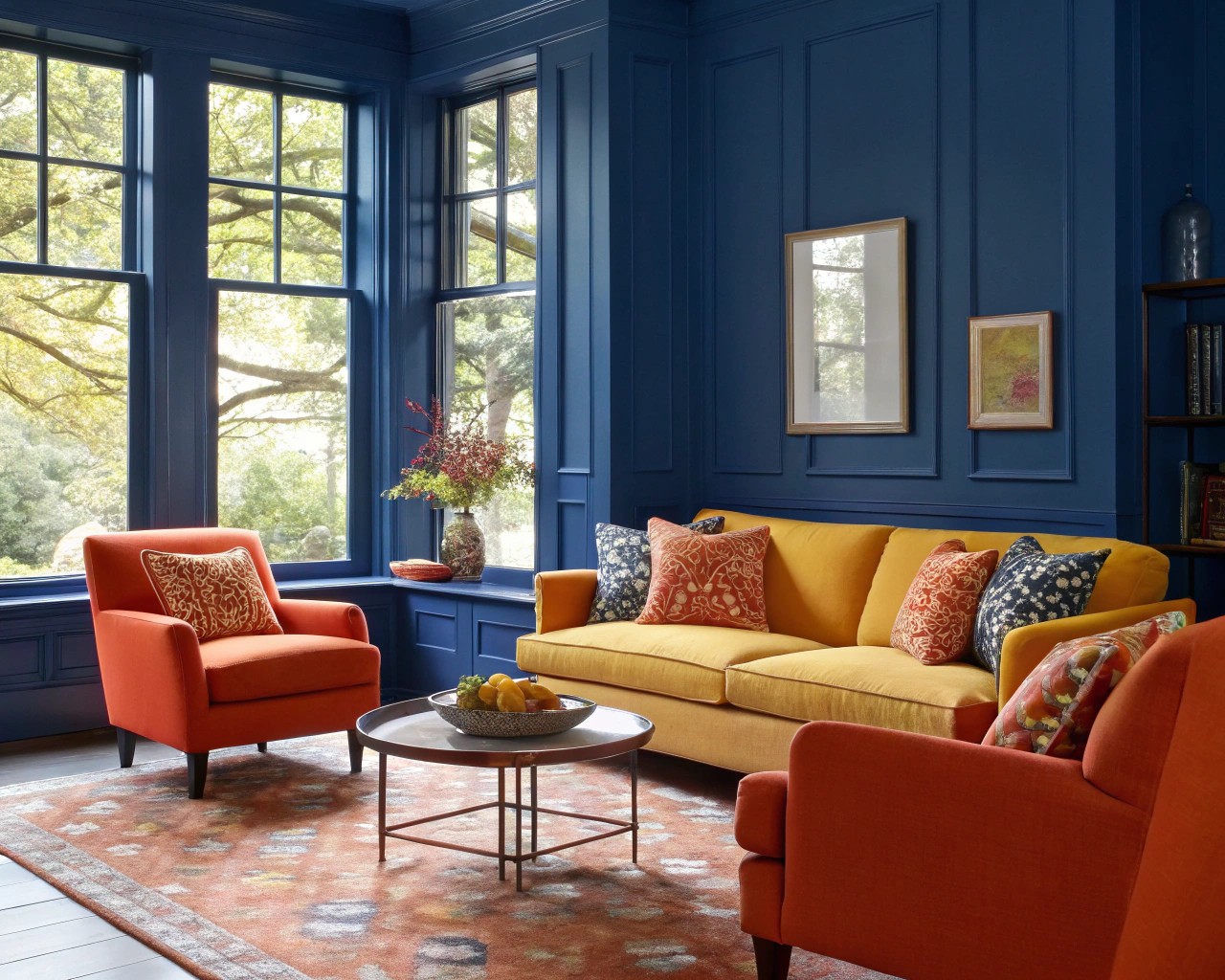
Moving beyond traditional color theory opens doors to remarkable combinations that feel both fresh and timeless. The 2025 design landscape celebrates bold color pairings that challenge conventional wisdom while maintaining sophisticated appeal.
Temperature-Contrasting Combinations

Baby Blue and Caramel
This pairing demonstrates how cool and warm tones can create perfect balance. The fresh, airy quality of baby blue finds grounding in caramel’s rich earthiness. Applications include:
- Velvet armchairs in baby blue paired with buttery leather ottomans
- Soft linen bedding contrasted with warm timber accents
- Ceramic accessories in varying shades of each color family
Burgundy and Nude
Representing “understated drama,” this sophisticated combination brings depth without overwhelming spaces. Consider:
- Burgundy tiled accent walls with nude terrazzo flooring
- Oxblood velvet sofas against neutral-toned walls
- Deep wine-colored ceramics displayed on light wood surfaces
Nature-Inspired Unexpected Pairings
Blue and Green Harmony
Challenging the old adage that “blue and green should never be seen,” this combination creates spaces that feel connected to both sky and earth. Successful implementations include:
- Deep navy cabinetry with olive green tile backsplashes
- Sage green upholstery accented with dusty blue throw pillows
- Teal ceramics grouped with eucalyptus-toned textiles
Scale and Proportion in Successful Duos
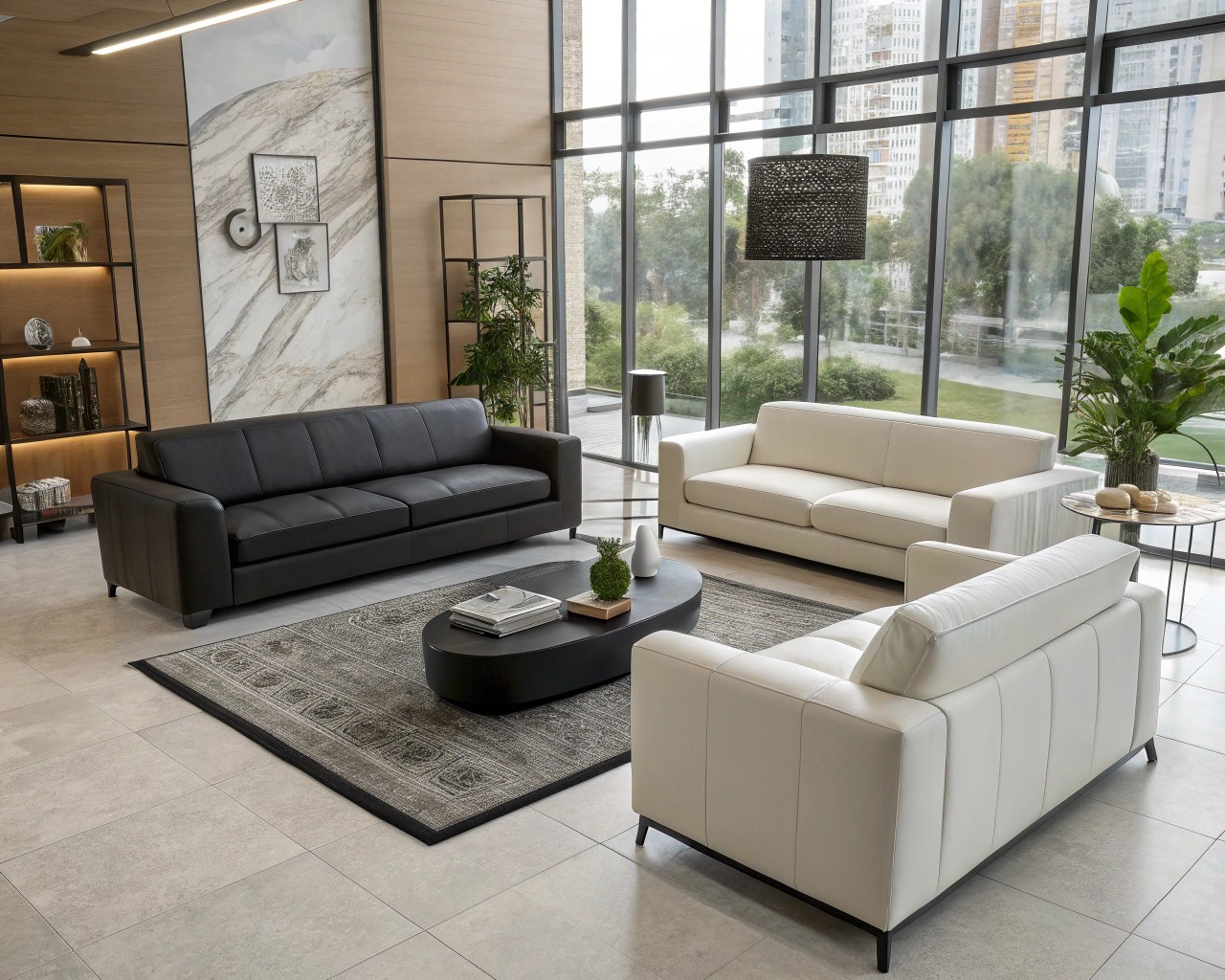
The relationship between object sizes often determines whether a pairing feels intentional or accidental. Understanding proportional harmony allows you to create compelling vignettes that draw the eye without overwhelming the space.
The Golden Ratio in Object Pairing
Objects that relate to each other in roughly 1:1.6 proportions tend to feel naturally balanced. This might manifest as:
- A large ceramic vase (12 inches tall) paired with a smaller companion piece (7-8 inches)
- Oversized artwork balanced by furniture pieces approximately 60% of its visual weight
- Groupings where the dominant object is roughly 1.5 times the scale of its companion
Visual Weight Distribution
Beyond physical size, consider each object’s visual impact:
| Object Type | High Visual Weight | Low Visual Weight |
|---|---|---|
| Color | Dark, saturated hues | Light, muted tones |
| Texture | Rough, complex surfaces | Smooth, simple finishes |
| Pattern | Bold, contrasting designs | Subtle, tonal variations |
| Material | Dense, opaque substances | Light, transparent elements |
Room-by-Room Application Strategies
Living Spaces: Anchoring with Intentional Pairs
The living room offers the greatest opportunity for impactful object duos because of its central role in daily life. Start with larger furniture pieces that establish your pairing philosophy, then echo these relationships in smaller accessories.
Seating Arrangements
Paired chairs create immediate symmetry and conversation areas. Rather than matching exactly, choose pieces that share a common element—perhaps similar proportions but different materials, or identical forms in contrasting colors. This approach provides visual cohesion while maintaining personality.
Lighting Partnerships
Few elements create symmetry as effectively as paired lighting fixtures. Consider these applications:
- Table lamps flanking a sofa or console
- Pendant lights floating above kitchen islands
- Wall sconces framing artwork or architectural features
- Floor lamps creating reading nooks in opposite corners
Bedroom Sanctuaries: Intimate Pairings

Bedrooms benefit from pairs that promote rest and tranquility while reflecting personal style. I often recommend starting with nightstand styling, where you can experiment with small-scale duos before committing to larger pieces.
Nightstand Compositions
– Varied-height ceramic pieces in complementary colors
– Books paired with small sculptural objects
– Vintage finds balanced with contemporary accessories
– Natural elements (crystals, shells) alongside modern lighting
Kitchen and Dining: Functional Beauty
Kitchens present unique opportunities to blend practicality with aesthetic appeal. The “Daring Pairings” trend encourages bold color combinations even in functional spaces.
Backsplash and Countertop Relationships
Consider unexpected combinations like:
- Emerald green tiles with warm brass fixtures
- Black marble surfaces with white oak cabinetry
- Terracotta subway tiles with stainless steel appliances
Common Pairing Pitfalls and How to Avoid Them
Over-Matching Syndrome
The biggest mistake in object pairing is trying too hard to match every element. True sophistication emerges from intentional imperfection—pieces that relate without being identical. Instead of purchasing complete sets, build collections gradually, allowing each piece to earn its place through genuine appeal rather than coordination convenience.
Scale Mismatching
Objects that are too similar in size often compete rather than complement. Aim for the 60-70% size relationship mentioned earlier, or create dramatic contrast with pieces that differ significantly in scale.
Ignoring the Room’s Architecture
Even the most beautiful object pairing can fail if it fights against the room’s inherent proportions and style. Consider your space’s bones—ceiling height, window placement, architectural details—when selecting and positioning paired elements.
Color Temperature Conflicts
Mixing warm and cool versions of the same color family often creates muddy, uncomfortable combinations. When working with unexpected color duos, ensure both colors share similar temperature characteristics or create intentional contrast between distinctly warm and cool elements.
Practical Implementation Guidelines
Starting Small: The Styling Tray Method
Begin your pairing experiments with styling trays—contained compositions that allow risk-free experimentation. Group two or three objects of varying heights, textures, and colors within the tray’s boundaries. This approach lets you test combinations before committing to larger room arrangements.
The 70-30 Rule
When implementing bold pairings, let one element dominate while the other provides accent. This 70-30 distribution prevents visual chaos while ensuring both elements maintain their distinct personalities.
Seasonal Rotation Strategy
Create multiple pairing combinations that you can rotate throughout the year. Store alternate pieces and swap them seasonally, keeping your spaces fresh while maximizing your decor investment.
Building Confidence in Unexpected Combinations
The “Daring Pairings” movement represents more than just a design trend—it’s an invitation to trust your instincts and create spaces that genuinely reflect your personality. Rather than following rigid rules, focus on pieces that genuinely appeal to you, then work to understand why they belong together.
Remember that successful pairing often comes from elements that share subtle connections—similar curves, complementary textures, or harmonious proportions—even when their surface characteristics seem incompatible. The goal isn’t to create perfect matches, but rather to establish dialogues between objects that feel both surprising and inevitable.

